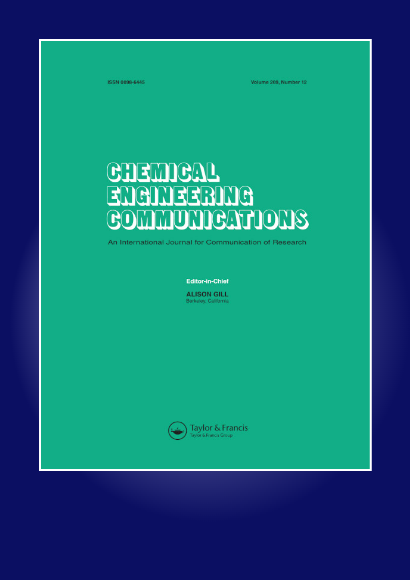氧化尖晶石基光催化降解工业废水中有机污染物的模拟
IF 1.9
4区 工程技术
Q3 ENGINEERING, CHEMICAL
引用次数: 1
摘要
人口的快速增长导致了工业化的快速发展,以满足人类的各种需求。因此,工业生产过程产生了大量的污水,并排放到水体中。这些人为活动往往对人类和水生生物有害。本文研究了氧化尖晶石光催化降解工业废水中有机污染物的模拟方法。采用了线性回归、决策树集成、中高斯支持向量机和指数高斯过程回归四种机器学习算法。对尖晶石氧化物粒度、初始染料浓度、光催化剂用量、带隙和照射时间等预测因子和光催化降解效率的目标输出进行参数化分析,结果表明,预测因子和光催化降解效率的目标输出之间存在非线性关系。通过R2为0.220的线性回归模型进一步证实了这一点。此外,决策树集成和中高斯支持向量机回归对光催化降解效率的预测效果较差,R2分别为0.420和0.490。指数高斯过程回归对光催化降解效率的预测效果较好,R2为0.991。关键词:降解、机器学习、尖晶石氧化物、支持向量机、废水致谢作者感谢伊拉克理工大学化学工程系的支持。披露声明作者未报告潜在的利益冲突。本文章由计算机程序翻译,如有差异,请以英文原文为准。
Modeling spinel oxide based-photocatalytic degradation of organic pollutants from industrial wastewater
AbstractRapid population growth has resulted in rapid growth in industrialization to meet various human needs. As a result of this, huge volume of effluent is being generated from the industrial processes and released into the water bodies. These anthropogenic activities are often detrimental to human and aquatic lives. In this study, a modeling approach to evaluate the photocatalytic degradation of organic pollutants from industrial wastewater using spinel oxide is investigated. Four machine learning algorithms namely, linear regression, decision tree ensemble, medium Gaussian support vector machine, and exponential Gaussian process regression were employed. The parametric analysis of the predictors (particle size of the spinel oxides, the initial dye concentration, the amount of photocatalysts, the band gap, and the irradiation time) and the targeted output of the photocatalytic degradation efficiency shows that a non-linear relationship exists between the predictors and the targeted output. This was further confirmed by the linear regression model with R2 of 0.220. Besides, the decision tree ensemble and medium Gaussian support vector machine regression offer poor performances in predicting the photocatalytic degradation efficiency as indicated by R2 of 0.420 and 0.490, respectively. A superior performance in predicting the photocatalytic degradation efficiency was displayed by the exponential Gaussian process regression with R2 of 0.991.Keywords: Degradationdyemachine learningspinel oxidesupport vector machinewastewater AcknowledgmentsThe authors acknowledge the support of Department of Chemical Engineering, University of Technology, Iraq.Disclosure statementNo potential conflict of interest was reported by the author(s).
求助全文
通过发布文献求助,成功后即可免费获取论文全文。
去求助
来源期刊

Chemical Engineering Communications
工程技术-工程:化工
CiteScore
5.50
自引率
4.00%
发文量
80
审稿时长
6 months
期刊介绍:
Chemical Engineering Communications provides a forum for the publication of manuscripts reporting on results of both basic and applied research in all areas of chemical engineering. The journal''s audience includes researchers and practitioners in academia, industry, and government.
Chemical Engineering Communications publishes full-length research articles dealing with completed research projects on subjects such as experimentation (both techniques and data) and new theoretical models. Critical review papers reporting on the current state of the art in topical areas of chemical engineering are also welcome; submission of these is strongly encouraged.
 求助内容:
求助内容: 应助结果提醒方式:
应助结果提醒方式:


